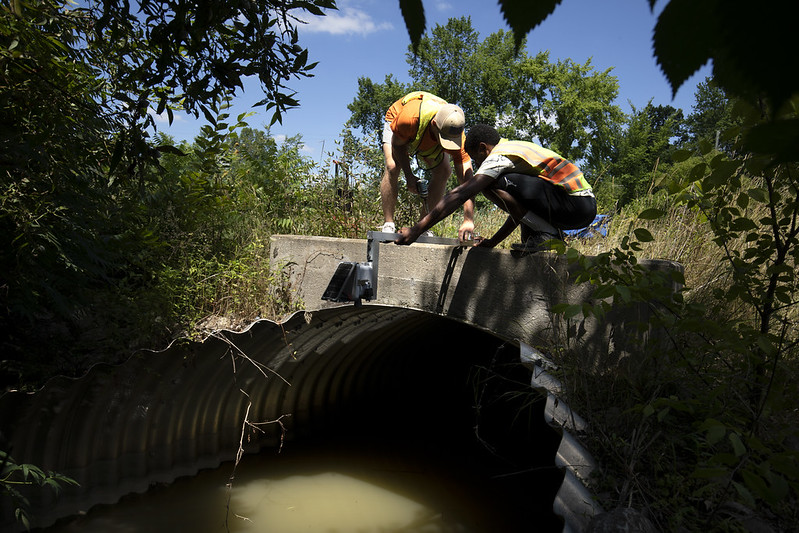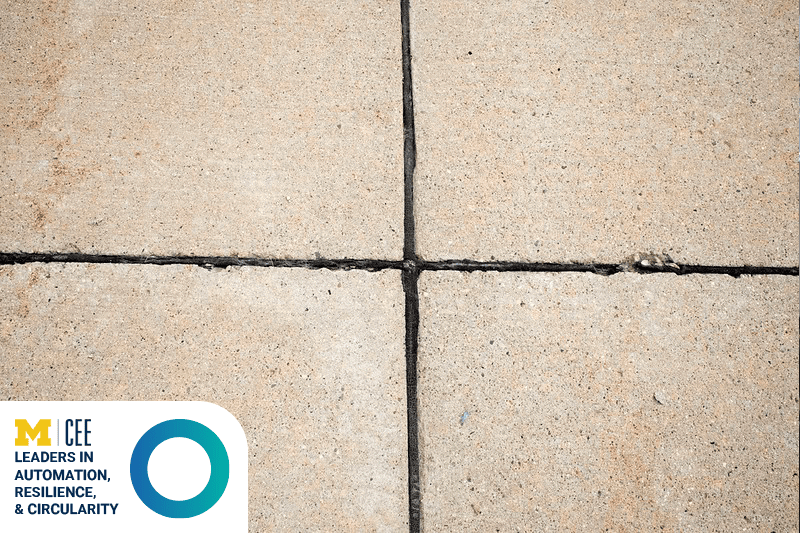Automation, Resilience and Circularity
The Department of Civil and Environmental Engineering at the University of Michigan stands at the frontier of engineering innovation. Here, Automation, Resilience, and Circularity are areas that not only represent cutting-edge advancements in the field but also underscore our role in forging a sustainable and technologically advanced future.
Automation

Efficient, Adaptive, Intelligent
Resilience

Mitigation Through Innovation
Circularity

Renew, Reuse, Reimagine
Automation
CEE is pioneering the development of AI-backed applications to enhance worker safety, real-time data analysis for flood monitoring—all to ensure a future where infrastructure is not only efficient, but resilient and adaptable to changing needs.
Automation is revolutionizing how we design, build, maintain and operate civil infrastructure systems. Our department leads in integrating advanced technologies such as artificial intelligence, robotics, sensing, and communications into civil and environmental engineering practices. These advances allow smart infrastructure to adapt to changing usage patterns, incorporate predictive maintenance and enhance resource efficiency. Automation not only streamlines construction processes but also reduces costs and minimizes environmental impact.
-

U-M CEE Engineers Pioneer Automation for Wheelchair Users
Merging manual control with automated navigation, Michigan researchers are redefining the future of assistive mobility.
-

Q&A: U-M CEE Engineers at the Forefront of Construction Automation
Professors Menassa and Kamat explain how they are developing autonomous solutions in the field
Resilience
CEE is committed to understanding real-world problems and providing actionable solutions that will ensure our world is safer and more resilient for generations to come.
In a world increasingly impacted by climate change and natural disasters, the need for resilient infrastructure is more critical than ever. Our department focuses on designing systems that anticipate and withstand environmental stressors, protecting communities and vital ecosystems. By leveraging cutting-edge risk analysis and hazard mitigation strategies, we are developing new materials and engineering solutions that enhance the longevity and safety of infrastructure. Our research emphasizes the integration of resilient design principles that safeguard urban and rural areas against the adverse effects of natural disasters, from hurricanes and earthquakes to flooding and drought.
-

Nature Meets Infrastructure: A New Vision for Stormwater Resilience in Southeast Michigan
With support from the National Fish and Wildlife Foundation, U-M researchers lead a collaborative, community-focused effort to integrate nature-based solutions with traditional infrastructure to reduce flooding, restore ecosystems, and build long-term resilience.
-

CEE Researchers Secure NSF Grants for Transformative Stormwater Projects
Both projects would have a measurable impact on their respective communities.
Circularity
At CEE, we’re forging pathways to a greener future, where the principles of circularity are embedded in engineering solutions that benefit both people and the planet.
Circularity is at the core of our vision for a sustainable future, focusing on transforming waste into valuable resources. Our researchers develop circular value chains that redefine how we think about materials and resources. By advancing technologies that valorize byproducts and reduce greenhouse gas emissions, we are innovating solutions that not only foster sustainability but also promote the reuse and renewal of life-giving resources such as water. These efforts aim to lower the environmental footprint of engineering practices and foster sustainable development.
-

Biodiesel wastewater treatment: Capturing carbon and valuable chemicals
A new experimental design tests catalyst stability in an electrochemical method for treating environmental waste streams while capturing valuable co-products
-

Sustainable cement: An electrochemical process to help neutralize cement industry CO2 emissions
The reaction produces carbon-negative calcium carbonate to replace limestone as the primary feedstock and green hydrogen as the fuel for cement kilns
Think Circular. Build Resilient. Automate the Future.